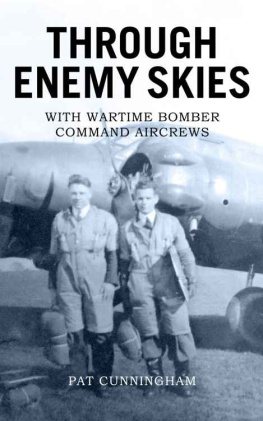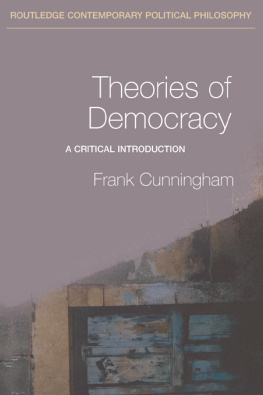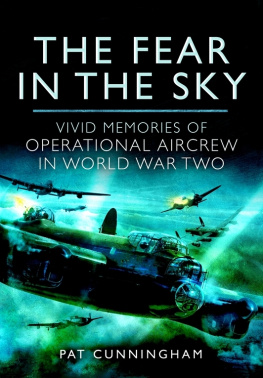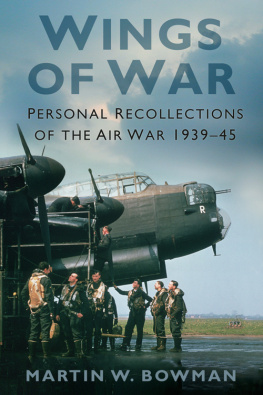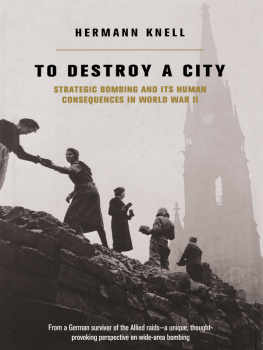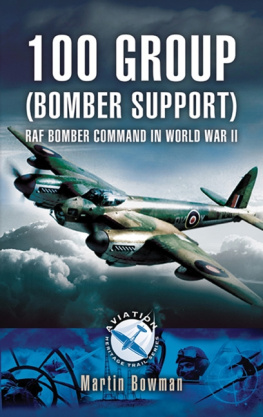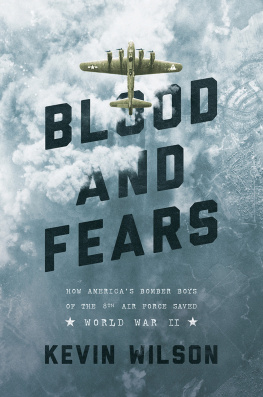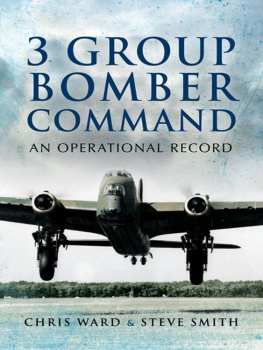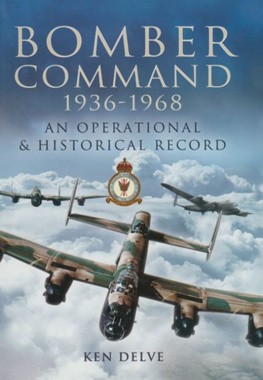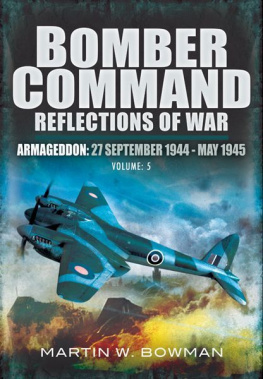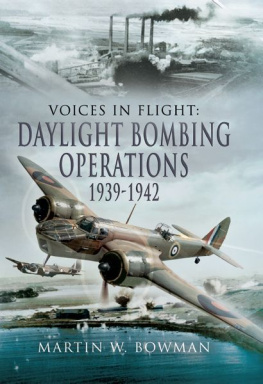Table of Contents
Through Enemy Skies
With Wartime Bomber Command Aircrews
Pat Cunningham, DFM

Books by the Author
Non-fiction
Bomb on the Red Markers
Fighter! Fighter! Corkscrew Port!
The Fear In the Sky
Through Enemy Skies
We Kept Em Flying
Peakland Air Crash Series:
The South (2005)
The Central Area (2006)
The North (2006)
Derbyshires High Peak Air Crash Sites, Northern Region
High Peak Air Crash Sites, Central Region
Derbyshires High Peak Air Crash Sites, Southern Region
White Peak Air Crash Sites
Faction
A Magnificent Diversion Series
(Acclaimed by the First World War Aviation Historical Society)
The Infinite Reaches 191516
Contact Patrol 1916
Sold A Pup 1917
The Great Disservice 1918
Blind Faith: Joan Waste, Derbys Martyr
Joyce Lewis of Mancetter, Lichfields Feisty Martyr
Fiction
In Kinders Mists (a Kinderscout ghost story)
Though the Treason Pleases (Irish Troubles)
Private publications by the Author
Now We Are Ninety (tribute to mother ...)
The Elephant Box, Volumes 1 # 2 (a grandfathers tall tales)
By Fell and Dale, Volumes 1 # 5 (walkers logs)
Frozen Tears (a Polish familys wartime odyssey)
Flotsam (short pieces)
Jetsam (short pieces)
Autobiographical Series:
Brat to Well Beloved (RAF Aircraft Apprentice to Air Electronics Officer)
[And, vice Gilbert and Sullivan ... ]
Apprentice to a Pilot (RAF pilot training)
The Kind Commander (RAF captaincy)
The Simple Captain (civil captaincy)
In preparation:
Frozen Tears (wartime romance)
The Ignorant Walkers Companion (a walkers reflections)
The Tenant/The CEO (experiences of a housing association)
Fifty Years Of Peace: 1945-1995 [Celebratory Stones in Derbyshire] (Memoirs of RAF peacekeeping personnel from Malaya to the First Gulf War)

Pat Cunningham,
DFM, BA, Lic Ac, cfs, RAF, 2014
Pat, youve got a Distinguished Flying Medal. Just for a change, hows about showing us some distinguished effing flying?
Me regular nav, Squadron Leader Roy Gibbard, No. 114 (Argosy) Squadron
Front cover: Trainee Air Observers Billy Stephens and Boyce Sproston, among the earliest of Bomber Commands casualties.
First published 2014 by DB Publishing, an imprint of JMD Media Ltd, Nottingham, United Kingdom.
Copyright Pat Cunningham 2014
All Rights Reserved. No part of this publication may be reproduced, stored in a retrieval system, or transmitted in any form, or by any means, electronic, mechanical, photocopying, recording or otherwise without the prior permission in writing of the copyright holders, nor be otherwise circulated in any form or binding or cover other than in which it is published and without a similar condition being imposed on the subsequent publisher.
ISBN 9781781562291
Acknowledgements
To the copyright holders authorising the use of their photographs: Richard Haigh, manager, intellectual properties, Rolls-Royce; Nicola Hunt, intellectual property rights copyright unit, MOD; archives staff, Imperial War Museum; Judy Nokes, licensing adviser, HMSO (Crown Copyright/MOD); archives staff, Royal Air Force Museum. Craving the indulgence of those for whom all contact attempts have failed.
To Malcolm Barrass, whose superlative website Air of Authority is an utterly dependable source.
To Paul Dalling, for editing the manuscript, and to Simon Hartshorne, for creating the book.
To Clive Teale, aviator and grammarian, for proof-reading and technical advice. Similarly to Ken Johnson and Ken Clare for down-to-earth criticism.
To Derby City Councils Housing Standards and Enforcement Services Department for bestirring the periodically lethargic Derwent Living.
To the oncologists of Derby Royal and Nottingham City Hospitals who, early in 2014, advised me against waiting for mainstream publishers to put this book on their list, and not to start another long one, whether as author, or reader ...
To the ever-ebullient and consistently irreverent staff of:
ASDA/Macdonalds, Spondon; Four Seasons Caf, Park Farm, Derby; Croots Farm Shop, Duffield; The Wheatcrofts Wharf Caf, Cromford; Caudwells Mill Caf, Rowsley; and in particular, Hobbs Tea Rooms, Monsal Head.
To the National Trust staff at Kedleston Hall for both irreverence and forbearance.
To the immeasurable expedition afforded by Google.
Despite such inestimable assistance, any errors remaining, and all opinions expressed are my own
Pat Cunningham, DFM
Introduction
Between them these ten personal accounts of RAF Bomber Command aircrew chart the history of Britains bombing campaign in the Second World War. Starting with the disastrous misemployment of the force in the opening weeks of the conflict misemployment which led to the Commands halting essays into night-navigating over Germany with propaganda leaflets , they progress from bombing raids with each aircraft acting independently, to strategic operations in which hundreds of heavy bombers were channelled towards accurately-marked release points. Some crew members detail their involvement with the electronic aids that made such precision marking possible. Others recall tours begun when the focus of operations had changed to tactical support of the Allied land forces, and defence against Hitlers indiscriminately-aimed V weapons. Later accounts close with reminders that, even after Germany surrendered, there was still a war raging in the Far East that seemed set to drag on interminably.
Although the accounts rarely touch upon any higher-level planning conferences than the pre-operation briefing, Bomber Command was never a blinkered force. Squadron commanders would tell crews what their target was; an oil facility, an aircraft factory, or a ball-bearing works, and as the invasion neared, rail and communications centres. However, such relatively junior commanders, and their crews, could only accept that the designated targets were indeed vital to the enemys war effort, and therefore, worth the sacrifice so many comrades had already made and that they were only too likely to be called upon to make themselves. At the same time they were well aware from training results how inaccurate their best efforts could be.
This introduction supplements the personal accounts by reviewing the policies that gave form to Bomber Commands six-year-long campaign.
On 8 July 1940, with Hitlers armies victorious after the battle of France, and poised to begin what Prime Minister Winston Churchill had expected, a month earlier, would be called the battle of Britain, Churchill wrote privately to the Minister for Aircraft Production, Lord Beaverbrook, urging him to hasten the availability of the promised heavy bombers. He went on, when I look round to see how we can win the war I see that there is only one sure path ... and that is absolutely devastating, exterminating attack by very heavy bombers from this country upon the Nazi homeland. And as Churchill was known for his meticulous use of language, the word exterminating must be given its full weight.
Other politicians who had publicly trodden similar ground remain vilified to this day. In 1932 de facto Prime Minister Stanley Baldwin, accepting as a truism Italian General Douhets contention that the bomber will always get through, told the House that the man in the street should realise that there is no power on earth that can protect him from being bombed ... That the only defence is in offence, which means that you have to kill more women and children more quickly than the enemy if you want to save yourselves. In 1938 Prime Minister Neville Chamberlain was to suffer for his seemingly complacent attitude to appeasement, and his re-use of Disraelis Peace for our time statement.

